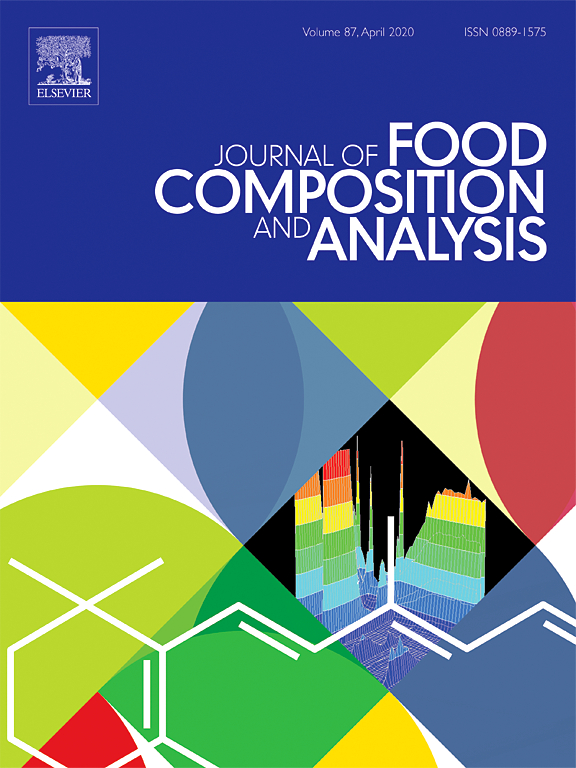Ver ítem
- xmlui.general.dspace_homeCentros Regionales y EEAsCentro Regional Buenos Aires SurEEA Hilario AscasubiArtículos científicosxmlui.ArtifactBrowser.ItemViewer.trail
- Inicio
- Centros Regionales y EEAs
- Centro Regional Buenos Aires Sur
- EEA Hilario Ascasubi
- Artículos científicos
- Ver ítem
Exploiting the successive projections algorithm to improve the quantification of chemical constituents and discrimination of botanical origin of Argentinean bee-pollen
Resumen
Bee-pollen as a functional food is gaining importance throughout the world because of its composition and biological properties. The protein content is one of the main parameters to determine its nutritional value, but it makes accurate labeling difficult due its high variability related to the botanical origin. Thus, this work employed near-infrared (NIR) spectroscopy and chemometrics to perform the quality control of Argentinean bee-pollen. Compared to
[ver mas...]
Bee-pollen as a functional food is gaining importance throughout the world because of its composition and biological properties. The protein content is one of the main parameters to determine its nutritional value, but it makes accurate labeling difficult due its high variability related to the botanical origin. Thus, this work employed near-infrared (NIR) spectroscopy and chemometrics to perform the quality control of Argentinean bee-pollen. Compared to full spectrum models, the successive projections algorithm (SPA) for selection of intervals or individual variables always achieved the best results for quantitative and qualitative approaches. For moisture and total protein content determinations, SPA coupled with partial least squares (iSPA-PLS) and multiple linear regression (SPA-MLR) achieved relative errors of prediction (REP) of 3.53% and 3.93%, respectively. For the pollen classifications, in terms of total protein content (as a dietary supplement with a cut-off higher than 20 g/100 g) and botanical origin, discriminant analysis by iSPA-PLS-DA achieved the best predictive abilities, misclassifying only one sample in the test set for both studies. The overall accuracies were 97.2% and 96.1%, respectively. Therefore, NIR spectroscopy combined with chemometrics can be used as an effective, fast, and low-cost tool for screening the quality of bee-pollen.
[Cerrar]

Autor
Vallese, Federico Danilo;
Garcia Paoloni, María Soledad;
Springer, Valeria;
Fernandes, David Douglas de Sousa;
Diniz, Paulo Henrique Gonçalves Dias;
Pistonesi, Marcelo Fabián;
Fuente
Journal of Food Composition and Analysis 126 : 105925. (February 2024)
Fecha
2024-02
Editorial
Elsevier
ISSN
0889-1575
1096-0481
1096-0481
Formato
pdf
Tipo de documento
artículo
Palabras Claves
Derechos de acceso
Restringido
 Excepto donde se diga explicitamente, este item se publica bajo la siguiente descripción: Creative Commons Attribution-NonCommercial-ShareAlike 2.5 Unported (CC BY-NC-SA 2.5)
Excepto donde se diga explicitamente, este item se publica bajo la siguiente descripción: Creative Commons Attribution-NonCommercial-ShareAlike 2.5 Unported (CC BY-NC-SA 2.5)


